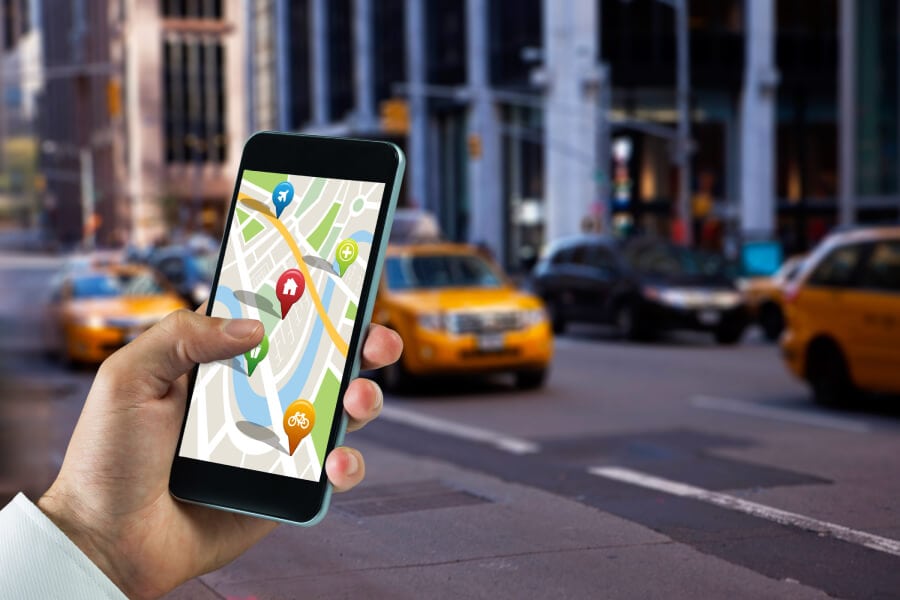How 5G Network will change Mobile App Development Scenario?
In today’s fast-paced lifestyle, our need to get everything faster and quicker cannot be satiated. One such thing is our need for data speed. First came 1G, then 2G, then 3G and then 4G. However, it wasn’t enough and now we are looking for 5G. It’s predicted that over 1.4 billion devices will be running on the 5G network by 2025 – accounting for 15% of the global total.
What is 5G: An Overview
5G, the fifth generation of wireless technology is already there in some regions while it will take some time for it to expand to other locations. Users are incredibly excited about 5G because it comes with the promise of 10 to 100 times faster cellular connection. In an ideal scenario, users should be able to download one whole season of Game of Thrones in seconds.
This fifth-generation cellular network makes better use of radio spectrum and enables more devices to access the internet simultaneously. This will help businesses become comparatively efficient and provide faster and more accessible data to consumers. In simple words, better network reliability, super-connected autonomous cars, industrial IoT, smarter communities and immersive education. All of this because of 5G.
How is 5G Different & Better Than 4G?
5G is not just about speed. It’s much more than that. Here’s how the fifth generation is way advanced in comparison to its predecessor.
1. Increased Connection Density
The capability to support the provision of successful delivery of data of a certain size within a duration is known as connection density. With 5G, one million connected devices can be supported per 0.38 sq. miles. In the present scenario, 4G can offer 2000 connected devices per 0.38 sq. miles only.
5G will also lead to the development of a new device category (M1 and NB-IoT). These are the equipment/tools that can operate on less power and electricity. This will support machines working on the low power supply or driven by batteries. This means that 5G will be able to cover rural markets as well.
2. Zero Latency
The transmission time taken by a source to transfer a packet of data to the receiver is latency. You may also call it gap time. It is measured in milliseconds. Nowadays, more than fifty percent of our mobile data is videos. Live streaming is an essential feature for our devices and data plans. During live streaming of any event, for example, cricket world cup or FIFA videos, the user on a 4G plan is seeing a video slightly behind what’s actually happening on the field.
With 5G, it takes even lesser time for a signal to be transferred. This means lower to negligible latency. This will result in faster loading, transmitting an acknowledgment of message being received. Lower latency will have a significant impact on virtual and augmented reality industry. Consumers will be able to shop by trying on products virtually. All they need to do is swipe on their cellphones and they can be trying on tens and hundreds of products on themselves. They can visualize home décor products in their homes without buying it.
3. Improved Precision
Fifth-generation networks can precisely understand requested data and have the capability of self-modulating power mode. It employs low power when not in use and higher power when streaming HD videos. This is one of the most device-friendly technologies.
4G networks use frequencies below 6 GHz while 5G networks use frequencies in the range of 30 GHz to 300 GHz. The data transfer at this frequency is more directional and it matters because it prevents the wastage of energy and strengthens access to the internet. 4G used to send data all over, which results in clutter, power wastage and weak accessibility to the internet. With 5G antennas can be shorter because this network uses a shorter wavelength.
Overall, fifth-generation networks can support faster data without becoming overly cluttered and interfering with other wireless signals.
4. Enhanced Battery Life
As mentioned above, fifth-generation phones will have lower latency, less than 1ms. This, when coupled with the IoT, can dramatically improve battery life. However, it is expected to be a city-based technology for the next couple of years. It will take a few more years to exploit the benefits of this technology to the full extent. Without proper tools and devices, it will not be possible for users to enjoy an enhanced battery life. In fact, with outdated machines, it might act as battery drainer. So, using the right type of equipment with 5G is going to play a significant role.

When will 5G be available?
5G cellular network has already been rolled out with limited capabilities in certain regions. It is not just an updated version of 4G. 5G is an entirely new network architecture.
It is a technology that is capable of transmitting millions of MB of data from your device to innumerable globally connected systems in the blink of an eye. It is expected to be widely accessible by 2020.
Impact of 5G on Mobile App Development
With the release of the fifth-generation network, mobile apps will be able to operate even more efficiently and smoothly. This, in turn, can boost overall productivity for both users as well as mobile app developers. App developers need to equip themselves technically and prepare for developing the apps with 5G technology in mind.
Here’s a list of ways in which this fifth-generation network will impact the mobile app development:
1. Enhanced Mobile Broadband (eMBB)
Companies will be able to provide low-cost mobile broadband service to users with the help of 5G. Greater data bandwidth and low latency on the 5G network will make enhanced mobile broadband an inexpensive and highly efficient service. This will be the first thing to create an economic impact on the industry. This will also lead to better usage of AR/VR media applications, smoother and faster ultra HD/ 360-degree video streaming.
2. Faster File Transfers
Many mobile applications require or include transferring data, money, files etcetera. 5G utilizes bits of the electromagnetic spectrum for faster data transfer instead of radio waves. This will allow mobile application developers to either improve existing apps or create new ones that can leverage this recent technology.
3. Media-rich User Experiences
User interface plays a vital role in the success or failure of any client servicing app or website. With 5G technology, clarity of the user interfaces will give developers a chance to upscale the UI of their applications. This can give them a substantial competitive edge.

4. Rising of Navigational Mobile Apps
The tourism industry, location-based service providers and navigational apps are going to benefit a lot after the mass adoption of 5G cellular networks. Uninterrupted, high-quality communications will open a new world of opportunities for these businesses.
5. Use of 3D Models
Educational and construction industries can utilize fifth-generation mobile apps along with modern 3D printers for creating high-quality 3D models. This can introduce a whole new innovative method of educating kids in schools.
6. Less Reliance on Hardware
5G will reduce the dependency on the processing power of the hardware of mobile devices. Data centers will take responsibility for processing power. This will enable users to transfer millions of MB of data without any lag.
7. Security Issues
Security will be a grave concern for app developers because 5G enables a fast and smooth connection between devices and networks. The speedy connection between many devices may introduce some issues in terms of security and privacy.
8. Multiple App Versions
With multiple cellular networks, users will not switch to the 5G network immediately. Some will continue to be on 3G/4G. Creating multiple versions of an app suitable for each version will be an add-on task for developers.
How to Prepare Your Mobile App for the 5G Revolution
When you are in a competitive business, any innovative technology works mostly on a first-come, first-served basis. If you’re the first one to jump on the train, then you’re the first one to acquire customers. You are already ahead by the time everyone else catches up with you.
Users are waiting for the mass release of the fifth-generation network so that they can experience faster and smoother network connection along with its other benefits. Here’s a list of ways in which a mobile app developer can prepare for this profound upcoming change in the industry.
1. Reliable Wireless Interactivity
In the present scenario, mobile app developers have to consider the limitations of current wireless technologies. For instance, some mobile apps or games need users to either have a substantial data package or Wi-Fi connection. There is an issue of waiting periods for downloading and installing the app.
Post 5G rollout, these limitations will get minimized. Users will need substantial data package, but they will be able to get it via the cellular network itself instead of Wi-Fi. Designers will have to design apps, considering that the download time will be a few seconds only. This will allow developers to focus on other aspects of app development.
2. Artificial Intelligence and Machine Learning
With 5G network, AI and machine learning will open new opportunities for connected devices like driverless cars and other electronic tools. Users will be able to connect with equipment remotely and access a massive amount of data and utilize processing power.
3. Support of Cloud Technology
With this new cellular network, cloud tech will become more prevalent on mobile, which means SAAS (software-as-a-service) will become a possibility for mobile app designers. This feature was restricted to desktops until now.
4. VR Streaming Experiences
VR streaming is finding new ways to penetrate the market. Businesses are utilizing it to deliver better experiences to their audience. However, due to current latency, performance and reliability issues enjoying seamless VR streaming experience is almost impossible. With 5G, it will be easier for mobile app developers to deliver such experiences to their users.
5. More Devices Connectivity
Internet of things(IoT) is responsible for connecting the world via devices. Consumers are spending money on smart devices like smart air conditioners, smart refrigerators, smart cars, etcetera. Businesses will tap in and take advantage of such devices by utilizing 5G connectivity.
Final Words
Fifth-generation is more dependable and capable than the generations before it. This means higher and faster internet connectivity, which will ultimately result in better accessibility and functionality of smart devices. It is a boon for the users as well as mobile app developers.
Source: techaheadcorp






